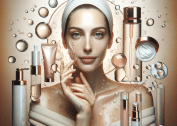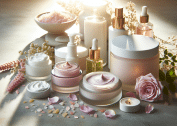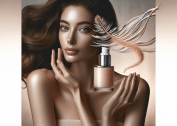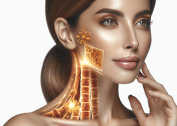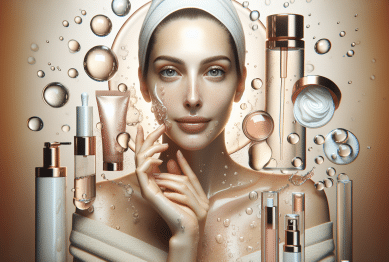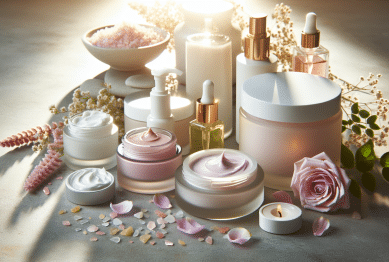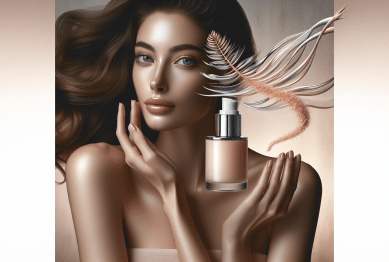Discover holistic secrets and science-backed habits that transform dull skin into a glowing, vibrant complexion. This in-depth guide explores daily routines, nutrition, stress management, and the evolving innovations behind true skin radiance.
Understanding Skin Radiance Beyond Appearance
Radiant skin is universally seen as a sign of health, vitality, and self-care. But what defines true skin radiance? Many mistakenly believe a dewy glow is achieved only with highlighters or a strict skincare routine. However, skin radiance reflects both internal wellness and external habits. Factors like hydration, sleep, and environmental exposures can subtly influence the skin’s tone and vibrancy. Moreover, paying attention to these foundational elements often brings results overlooked by quick fixes, helping develop a naturally healthy glow without relying on just products.
Scientific research links skin luminosity with cellular hydration and the barrier’s ability to retain moisture. When the natural barrier is maintained, water loss is minimized, and the skin appears plumper and more luminous. On the flip side, pollution, harsh chemicals, and lifestyle choices can impact the epidermis, resulting in a dull complexion or uneven texture. Even small changes—like swapping out harsh cleansers for gentler options—may contribute to increased brightness and better resilience to daily stressors.
Stress, diet, hormonal changes, and genetic predispositions all shape the baseline of skin radiance. For example, inadequate nutrition or persistent anxiety can slow down cellular turnover, leading to buildup and lackluster tone. By viewing glowing skin as a sign of internal wellness, it’s clear why beauty routines are most effective when paired with mindful nutrition, balanced routines, and ongoing self-care. True radiance goes far beyond surface appearances—it’s a reflection of nurturing the whole self.
The Science Behind Glowing Skin
Understanding what makes skin glow leads to better choices. At the heart of radiance lies the skin barrier—a thin, protective layer that locks in moisture and defends against environmental damage. Healthy skin cells reflect light more evenly, making the complexion look luminous. Regular exfoliation can aid in shedding dead skin cells, while antioxidants protect against free radicals produced by pollution and UV rays. As a result, incorporating a barrier-support routine is vital for promoting lasting brightness and resilience.
Biological processes like collagen synthesis, microcirculation, and sebaceous gland function all play a role in radiant skin. Collagen gives firmness and elasticity while promoting plumpness. Microcirculation ensures that nutrients reach the skin surface, contributing to a lively, rosy tone. When these mechanisms are supported with a mix of topical antioxidants—like vitamin C—and nutrient-dense foods, skin not only maintains its glow but repairs from daily stressors more efficiently.
Recent advances in dermatology point to the skin microbiome as a lesser-known, but major, factor in visible radiance. A healthy community of microscopic organisms protects against irritation and inflammation. Disruptions—caused by over-washing or harsh treatments—can lead to sensitivity and dullness. Instead, gentle, microbiome-friendly cleansers and probiotic-infused skincare support a balanced ecosystem. This approach provides a foundation for long-term radiance beyond short-term shine.
Daily Routines That Boost Your Natural Glow
Consistency is more powerful than intensity when it comes to a radiant complexion. Establishing a twice-daily routine—cleansing, hydrating, and protecting—lays the groundwork for an even tone and smooth texture. Cleansing removes debris and excess oil, but always choose mild formulas to avoid stripping natural lipids. Daytime should focus on hydration and sunscreen application, while nighttime routines can include replenishing serums or creams packed with ceramides and hyaluronic acid for maximum overnight recovery.
Layering lightweight essences and serums before thicker moisturizers helps lock moisture in and deliver active ingredients precisely where needed. Look for ingredients such as niacinamide, peptides, and antioxidants known for brightening effects. Many find that incorporating facial massage or gua sha techniques improves blood flow and lymphatic drainage, contributing to a more lifted, rejuvenated appearance. Over time, these rituals help maintain skin elasticity and amplify the skin’s ability to reflect light naturally.
Sun protection remains non-negotiable, even on cloudy days. Dermatologists recommend broad-spectrum SPF as the most effective measure against premature aging, hyperpigmentation, and a lackluster complexion. Opting for mineral-based sunscreens can shield skin without the irritation sometimes triggered by chemical formulas. Reapplying SPF throughout the day, especially with outdoor activity, helps sustain healthy radiance for all skin tones and types.
Essential Nutrition for Skin Vitality
The phrase “beauty starts from within” is especially true for skin health. Vitamins, minerals, and balanced hydration fuel every phase of cellular turnover. Vitamin C—a cornerstone nutrient—protects collagen and brightens skin, while vitamin E and omega-3 fatty acids reduce inflammation and dryness. Hydration is just as critical. Sufficient water intake improves elasticity, assists in flushing toxins, and maintains a healthy, supple appearance throughout the face and body.
Whole foods rich in antioxidants, such as berries, leafy greens, tomatoes, and nuts, combat oxidative stress linked to environmental aging. Alongside antioxidants, zinc and selenium play roles in combating breakouts and supporting wound healing. Complex carbohydrates and lean proteins power skin renewal, and reducing added sugars may lower the risk of inflammation and hormonal disruption that can negatively impact radiance. Replacing processed snacks with nutrient-packed alternatives can yield visible changes over time.
While supplements may help fill certain nutritional gaps, the benefits of a balanced diet rich in colors, fibers, and phytonutrients are difficult to replicate with pills alone. Working with a registered dietitian or nutrition professional can provide customized recommendations tuned to personal needs. Over time, mindful eating habits will fuel the glowing, well-nourished complexion so often desired and admired in beauty circles.
Managing Stress for Lasting Beauty
Chronic stress is an often underestimated factor in dull, reactive skin. Cortisol, the body’s primary stress hormone, affects barrier function, oil production, and inflammation. Over time, elevated cortisol can trigger breakouts, dryness, and accelerated aging. Balanced routines for sleep, relaxation, and movement are fundamental for physical and emotional wellbeing—and, in turn, radiant skin.
Scheduling mindful breaks has a significant role in stress reduction. Integrating breathing exercises, meditation, or gentle stretching through the day can decrease tension and support a healthy complexion. Quality sleep provides time for the skin to repair and build new collagen, and studies show that inadequate rest is linked to increased visible signs of aging, such as wrinkles and uneven texture.
Social connections and community support have profound effects on both mental wellbeing and physical appearance. Isolation or persistent worry may show up as fatigue or pallor. Taking time for activities that spark joy—a walk, creative hobbies, or time in nature—renew energy reserves and return the natural vibrance that stress often depletes. The beauty of relaxation is that it’s accessible, adaptable, and leaves a positive mark on skin over the long term.
Innovations and Safe Approaches in Skin Care
Advances in wellness technology offer more options than ever for those pursuing radiant skin. Treatments like low-level light therapy, ultrasonic cleansing, and microcurrent stimulation have been shown to boost circulation and collagen. Dermatologists and licensed estheticians emphasize combining tried-and-true routines with selected innovative treatments for optimal results. Importantly, these professional techniques should be evidence-based and appropriate for individual needs.
Personalized skincare—guided by patch testing and digital assessment tools—allows for customization and reduces the risk of sensitivity. Professional advice leads to more efficient choices, particularly when considering ingredients like retinoids or chemical exfoliants. Individuals with sensitive skin are advised to introduce active products gradually, allowing time for adaptation and minimizing irritation. Authentic results often stem from patience and consistency, rather than chasing trending “miracle” treatments.
Sustainability and ingredient transparency are also trending. Many consumers now favor formulations featuring bioavailable actives, botanicals, and standardized purity testing. Environmentally sound packaging and cruelty-free certification are priorities. By making informed, conscious decisions, it’s easier to develop routines that align with both personal wellness goals and wider ethical values. That’s beauty that truly radiates from within and inspires others.
References
1. American Academy of Dermatology Association. (n.d.). Skin care and aging. Retrieved from https://www.aad.org/public/everyday-care/skin-care-basics/care/skin-care-and-aging
2. Harvard Health Publishing. (n.d.). Skin care: 5 tips for healthy skin. Retrieved from https://www.health.harvard.edu/staying-healthy/skin-care-5-tips-for-healthy-skin
3. National Institutes of Health. (n.d.). Beyond skin deep: The immune system of the skin. Retrieved from https://www.niams.nih.gov/health-topics/skin-health
4. Mayo Clinic. (n.d.). Healthy lifestyle: Stress management. Retrieved from https://www.mayoclinic.org/healthy-lifestyle/stress-management/in-depth/stress-relief/art-20044456
5. Cleveland Clinic. (n.d.). Nutrition and skin health. Retrieved from https://health.clevelandclinic.org/how-nutrition-affects-your-skin/
6. Johns Hopkins Medicine. (n.d.). Probiotics and the skin microbiome. Retrieved from https://www.hopkinsmedicine.org/health/wellness-and-prevention/probiotics-and-the-skin-microbiome


